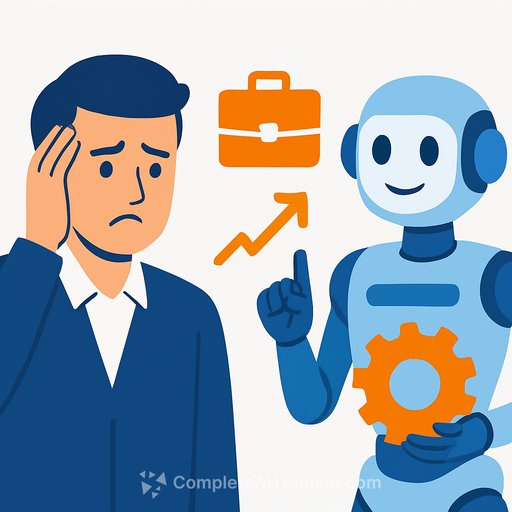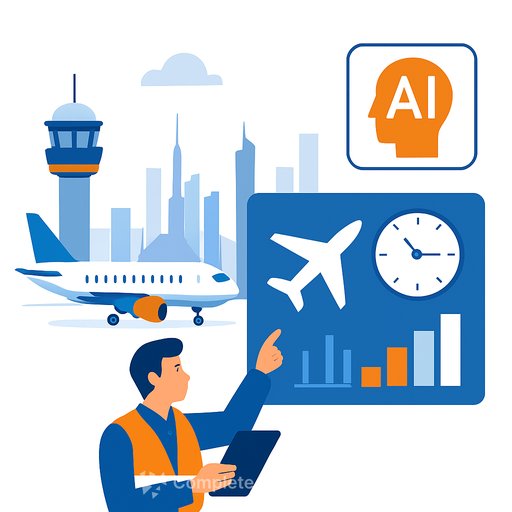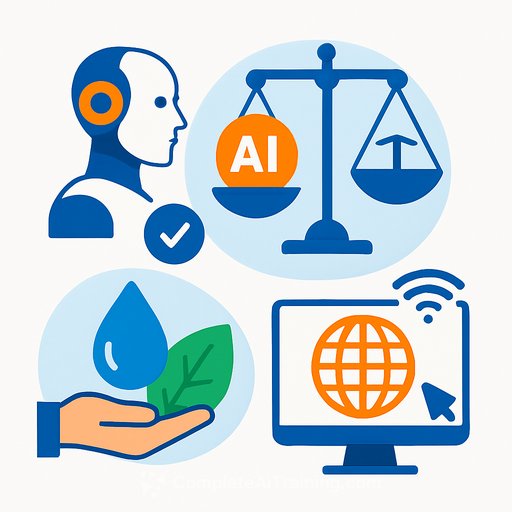Worried AI will take your management job? Here's how to stay valuable
Layoffs are back in headlines. Big tech is trimming thousands of roles, and managers are squarely in scope. Some leaders are saying the quiet part out loud: AI progress will reshape headcount.
Workers feel it. Surveys show one in five Gen Z employees are very concerned about losing their job to AI, and about a third of U.S. workers expect fewer opportunities ahead. Pew Research echoes those concerns.
AI can code, debug, write reports, and manage schedules. That means the "busywork" side of management is getting automated. What keeps you relevant are human-centric skills and the ability to make AI multiply your team's output.
The core advantage: distinctly human management
Your edge isn't typing faster or making more slides. It's judgment under uncertainty, trust-building, and clear direction that aligns people and priorities.
- Empathy that drives outcomes: Read motivation, reduce fear, and create safety so people ship hard work.
- Active listening: Hear what's said and what's not. Reflect back. Clarify next steps.
- High-signal communication: Short, concrete, and tied to goals. Remove ambiguity.
- Decision-making: Weigh trade-offs, set constraints, commit, and move.
- Conflict that moves things forward: Surface tensions early, solve the problem-not the person.
Upgrade your operating system as a manager
- Move from task traffic cop to outcomes owner: Define the target, constraints, and quality bar. Let the team choose the route.
- Shorten feedback loops: Weekly goals, midweek check-ins, and end-of-week retros. Small course corrections beat big rescues.
- Run 1:1s that create momentum: 10 minutes on status, 10 on blockers, 10 on growth. End with commitments.
- Make decisions visible: Use a simple log: context, options, choice, owner, review date.
- Coach, don't rescue: Ask "What options do you see?" before giving answers. Grow judgment.
Use AI as your co-manager (not your competitor)
Let software handle the mechanical work so you can do the human work.
- Meetings: Generate agendas from goals, draft notes, and action items. Ask AI for risks and follow-ups you missed.
- Reporting: Feed data in; get weekly summaries, trend highlights, and anomalies. You add insight and decisions.
- Planning: Create scenarios, estimate ranges, and pressure-test assumptions. You choose the path.
- SOPs and onboarding: Turn tribal knowledge into checklists and playbooks in minutes.
- Communication: Draft emails, updates, and job descriptions, then edit for tone and clarity.
Simple prompt to start: "Here's our quarterly goal, constraints, and team capacity. Propose a 6-week plan with milestones, risks, and check-ins. Flag hidden dependencies."
Metrics that prove your value
- Cycle time: Work starts to work shipped.
- Decision velocity: Time from issue discovered to decision made.
- Quality: Defects, rework, and variance from spec.
- Engagement and retention: Signals that your team wants to stay and perform.
- Cross-team throughput: How fast work moves across boundaries.
Tie AI usage to these numbers. If the metric doesn't move, change the workflow, not just the tool.
Build an AI skill stack that fits your job
- Writing and analysis: Draft, summarize, compare options, and extract action items.
- Spreadsheet and data: Quick models, variance checks, and visual summaries.
- Project systems: Automations for intake, tagging, and status updates.
- Prompt patterns: Role, context, constraints, examples, and output format. Save and reuse.
Want structured upskilling by role? Browse practical programs here: AI courses by job and prompt engineering resources.
Common mistakes to avoid
- Delegating judgment to AI: Use it to widen options, then you decide.
- Automating chaos: Fix the process before you wire it up.
- Over-communication without clarity: More words aren't clearer. Defaults, owners, and deadlines are.
- Ignoring ethics and security: Set guardrails: what data is allowed, review steps, and sign-off points.
A 30-day plan
- Week 1: Map your top 10 recurring tasks. Circle anything repeatable, reportable, or schedulable. Automate two.
- Week 2: Redesign 1:1s and team rituals. Add a weekly decision log and a simple retro.
- Week 3: Build two SOPs with AI (onboarding and reporting). Publish them and gather feedback.
- Week 4: Pick one metric to move (e.g., cycle time). Run a 2-week experiment and review impact.
Why you'll still matter
AI reduces the cost of average management. It increases the value of great management. If you get sharper at empathy, listening, and decisive communication-and you pair that with smart automation-you won't be replaced. You'll be the reason your team outperforms.
If you want a curated starting point, check the latest programs: Latest AI courses.
Your membership also unlocks:






